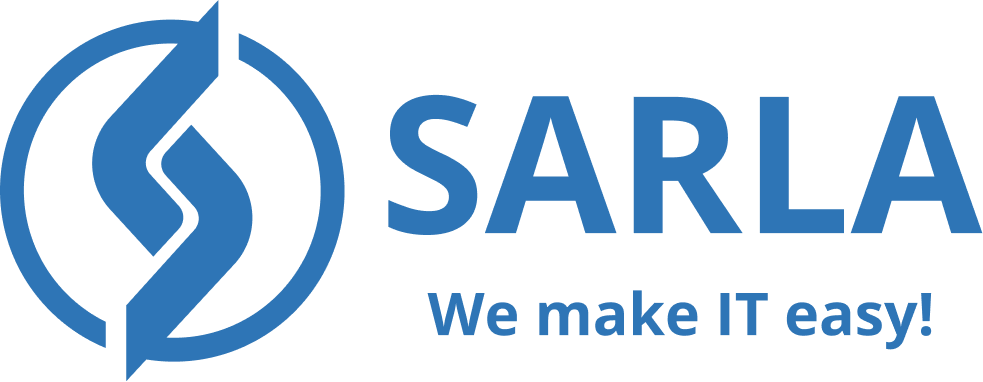Gone are the days when artificial intelligence was a futuristic tool. It has now become an integral part of the business operations and analytics. It can help automate the workflow and eliminate redundant tasks. However, what most people fail to realize is that they can utilize AI to make more intelligent and more confident decisions. The businesses that doubt the use of AI feel that they lack sufficient trust in the decisions made by AI, and if some data supports their concerns.
This is where the use of a dashboard comes in. An AI-enabled dashboard can help with the transparency of the decisions and the science behind them.
Why Transparency Matters in AI Adoption?
AI adoption faces barriers not only from technical complexity but also from human skepticism. Research from PwC and Gartner shows that a lack of visibility into AI decision-making is a top reason organizations hesitate to scale AI projects. Without clarity, employees may resist using AI outputs, and customers may distrust automated interactions.
Dashboards bridge this gap by presenting AI actions in a clear, trackable, and interpretable format. They transform AI from a “black box” into a system that stakeholders can monitor, question, and refine.
Core Functions of AI Transparency Dashboards
Action Tracking
Dashboards log every action the AI takes. Whether it’s recommending a product, flagging a transaction as fraudulent, or scheduling a service, this creates a record of accountability that businesses can review in real time.
Decision Rationale
Many modern AI systems provide reasoning layers (sometimes known as “explainable AI” features). Dashboards surface these explanations, showing why a certain recommendation or decision was made.
Performance Monitoring
Dashboards highlight metrics like accuracy, bias detection, efficiency gains, and error rates. By visualizing these KPIs, businesses can ensure that AI is aligned with business goals and compliance standards.
Benefits of Enhanced Transparency
- Builds Employee Trust: Workers are more willing to use AI insights if they can see the “why” behind outputs. It is the basic human instinct to understand the logic and then implement it, especially when there is a lot at stake.
- Improves Customer Confidence: Transparent AI reassures customers that personalization, credit approvals, or risk assessments are fair. If your consumer can understand how AI reached a certain conclusion, they are more likely to trust it.
- Strengthens Compliance: Industries like healthcare and finance require audit trails for AI-driven decisions. Dashboards make regulatory reporting far simpler. So, the next time the suitor visits to check on the internal activity, your dashboard can do the talking for you.
- Enables Continuous Improvement: By monitoring performance, organizations can quickly spot and correct errors, biases, or inefficiencies. It saves a lot of time that you can use to fix the issues and then move on to a productive strategy. Manual work can falter in such cases.
Real-World Applications Across Industries
- Financial Services: Fraud detection dashboards provide visibility into flagged transactions, ensuring compliance with anti-money laundering (AML) laws.
- Healthcare: AI dashboards track diagnostic recommendations, allowing doctors to verify decision paths and build patient trust.
- Retail: Marketing teams use AI dashboards to monitor recommendation engines, adjusting campaigns when customer preferences shift.
- Energy & Utilities: Predictive maintenance dashboards show which assets AI flags for repair, reducing downtime while maintaining safety accountability.
As regulations like the EU AI Act and emerging US frameworks take shape, transparency will move from a best practice to a legal requirement. Dashboards will evolve into central governance tools, combining explainable AI with compliance tracking and user-friendly design.


Joe1346
https://shorturl.fm/rOZLe
Hanna3153
https://shorturl.fm/IfKzc
Shane1599
https://shorturl.fm/41FRM
Jennifer197
https://shorturl.fm/PYLIN
Diana2285
https://shorturl.fm/j09Qe
Zane368
https://shorturl.fm/yIcQk
Clyde4917
https://shorturl.fm/iw1zz
Angel1760
https://shorturl.fm/lLH66
Holden2059
https://shorturl.fm/cC2VI
chesterfieldph
That’s a fascinating take on longshot potential! Seeing platforms like chesterfield ph legit prioritize user verification gives me confidence in online gaming’s future – a safe “playground” is key! Good analysis.
chesterfieldph
That’s a fascinating take on longshot potential! Seeing platforms like chesterfield ph legit prioritize user verification gives me confidence in online gaming’s future – a safe “playground” is key! Good analysis.
bengoplus
Really digging this breakdown of blackjack strategy! It’s cool seeing how even small adjustments can impact your odds. I noticed bengo plus download apk offers transparent RTP, which is huge for informed play – knowing those stats builds confidence at the table! 🤔
bengoplus
Really digging this breakdown of blackjack strategy! It’s cool seeing how even small adjustments can impact your odds. I noticed bengo plus download apk offers transparent RTP, which is huge for informed play – knowing those stats builds confidence at the table! 🤔
jlboss
That’s a solid point about game integration – seamless access is key these days! JLBoss Games seems to really nail that, especially with the jl boss app. Quick signup & easy funding are huge wins too, honestly. Excited to see what they add next!
jlboss
That’s a solid point about game integration – seamless access is key these days! JLBoss Games seems to really nail that, especially with the jl boss app. Quick signup & easy funding are huge wins too, honestly. Excited to see what they add next!